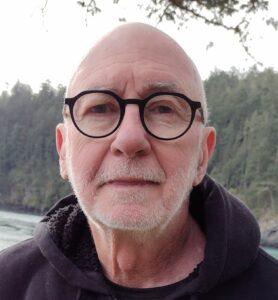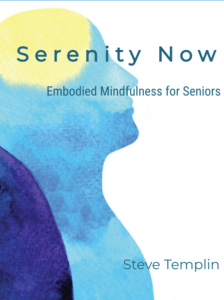This is part 2 of a 3 part post giving an overview of MindBody Medicine. In part 1 we discussed how the stress response is the primary cause of most chronic pain and illness. In this post, we’ll explore how and why mindbody approaches can be successful where conventional approaches have failed.
Turn Off the Stress Response and Repair Your Brain
The key to MindBody Medicine is to restore order to the brain and nervous system that have been disrupted by the stress response. That, in turn, frees up the body to begin healing itself. And that, for the most part, is an inside job. No externally applied treatment or remedy will provide lasting results if an imbalanced brain and nervous system are creating stress-related symptoms.
If avoided, buried, or ignored feelings are the primary triggers for a chronic stress response, then a significant part of the solution is learning a safe way to reconnect with our emotional experience.
Learning to safely reconnect with feelings, the felt experience of the body, often results in healing, even when all other therapeutic approaches have failed.
MindBody Medicine in Clinical Settings
Here are some of my favorite examples of mindbody approaches that involve direct awareness of bodily felt experience and notable practitioners who have played a significant role in the development of MindBody Medicine.
I’ve incorporated these approaches into my clinical practice.
Focusing
Focusing was discovered at the University of Chicago by Eugene Gendlin, Ph.D. in the 1960’s. Gendlin was a psychologist and a philosopher who was interested in discovering the most efficient approaches to emotional healing.
He discovered what he believed was a universal human mechanism for encouraging emotional healing and mental clarity. His research involved hundreds of test subjects. Enhanced brain function, emotional stability, and mental clarity were brought about by quieting the analytical mind while at the same time focusing patiently on subtle feelings and sensations in a very specific manner. This very specific way of noticing feelings is called Focusing.
Subsequently, with the development of the science of epigenetics, it’s now known that Focusing not only enhances emotional and mental functioning but physical functioning and health as well.
Bruce Lipton, Ph.D. and others in the field of epigenetics are showing how our genes, that are ultimately responsible for building our bodies, are influenced by changes in our thoughts and feelings, by our perceptions.
Dr. John Sarno
John Sarno, M.D. was an orthopedist in charge of New York University’s Rehabilitative Medical Center.
In the 1970’s Dr. Sarno discovered that many common conditions, like fibromyalgia and low back pain, responded poorly to conventional treatments.
His research led him to the discovery that denied emotional experience was at the root of many painful conditions.
Dr. Sarno was a pioneer in using journaling, along with other emotional awareness processes, to produce positive results in patients who had not benefited from standard treatments, like drugs, surgery, or physical therapy.
His research also showed that structural abnormalities, like arthritic joints or protruding discs, while often blamed for causing pain, were frequently simply innocuous changes in structure. The real cause of most chronic pain, he discovered, was due to a combination of muscle tension and oxygen deprivation, caused by the suppression of emotions.
Dr. Sarno’s discoveries, while infrequently accepted in mainstream medical environments, are providing an important alternative to expensive and often dangerous surgeries, and the very addictive opioid pain medications. These medications are now the number one cause of preventable death in the U.S.
On a related note, in a recent JAMA article a leading pain researcher, Dan Cherkin, Ph.D., demonstrated that mind-body interventions for the treatment of chronic back pain and other illnesses were more effective than usual medical care.
Mindfulness-Based Stress Reduction
Jon Kabat-Zinn, Ph.D. created a mindfulness-based program at the University of Massachusetts Medical Center in the 1970’s to assist patients suffering from chronic pain, depression, and other medical conditions.
His program consisted of mindfulness, body awareness, and yoga. His program has been refined over the decades and is now taught in many hospital settings around the U.S.
Open Focus
Open Focus was developed by neurofeedback pioneer Les Fehme, Ph.D. at the Princeton Biofeedback Center.
Dr. Fehme discovered a very specific style of using attention, often focused on the body, that created dramatic healing shifts in brain function. Specifically, his style of attention called Open Focus, created whole brain synchrony of alpha waves.
This enhanced brain state inhibits the stress response while supporting emotional and physical healing. Open Focus is also very helpful with relieving pain.
Somatic Experiencing
Peter Levine, Ph.D. is a psychologist and the creator of Somatic Experiencing. He’s widely considered one of the leading trauma therapist worldwide, specializing in the treatment of PTSD (Post Traumatic Stress Disorder).
Somatic Experiencing focuses on the direct experience of bodily felt sensations. Somatic refers to the body as it’s experienced from the inside. His body oriented approach is specifically suited to the resolution of traumatic memories because those memories bypass the normal verbal processing centers in the brain.
Here is a link to part 3 of this 3 part post.


 Steve is a retired Doctor of Oriental Medicine, Acupuncture Physician, and HeartMath Trauma-Sensitive Certified Practitioner with over 35 years of clinical experience in the fields of Energy Medicine, Energy Psychology, and Biofeedback.
Steve is a retired Doctor of Oriental Medicine, Acupuncture Physician, and HeartMath Trauma-Sensitive Certified Practitioner with over 35 years of clinical experience in the fields of Energy Medicine, Energy Psychology, and Biofeedback. 